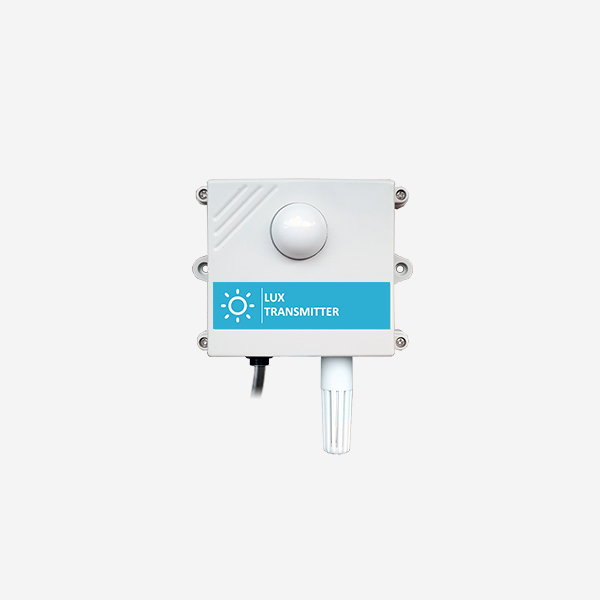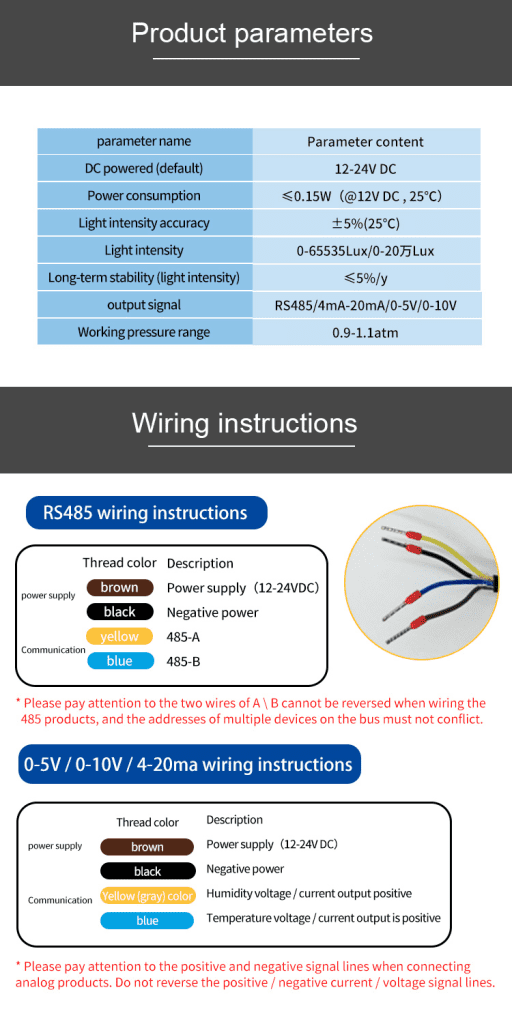What is illuminance?
Illumination intensity, referred to as illuminance, is a physical term that refers to the luminous flux of visible light received per unit area. The unit of illumination is Lux (Lux or LX). Illuminance is the illuminance of an object’s surface, which can be detected by a Illumination Sensor.

Plant growth is achieved by storing organic matter through photosynthesis, and light intensity directly affects the strength of plant photosynthesis. Therefore, the light intensity has a great influence on plant growth and development.
Different plants have different responses to the photoperiod. Plants that require 14 to 17 hours a day to flower buds are called long-day plants, such as rape, spinach, and radishes; plants that require 8-12 hours of light per day are called short-day plants. Such as chrysanthemum, rice, soybean, etc. But higher or lower light intensity will have a bad effect on plants.
The number of hours of light and the intensity of light not only have an important impact on the photosynthesis of plants, but also affect their physiological functions through the visual organs of livestock and poultry, thereby having an important impact on their production performance such as milk production, egg production, and hair production.
The importance of illumination
Chickens are very sensitive to light intensity. Under natural conditions, the egg production of laying hens has obvious seasonal changes, which are mainly caused by changes in the photoperiod. Generally, it gradually increases in spring, decreases gradually in autumn, and basically stops production in winter. Light acts on the pituitary gland through GnRH to promote the secretion and release of LH and FSH, thereby affecting egg production. When the light duration exceeds 17 hours/day, it will not only be useless but will reduce egg production. However, if short light is used during the laying period, the egg production will decrease, but the egg body will be larger and the feed utilization rate will be higher.
Scientific research has found that whether plants or animals want to obtain their production performance, there should be a minimum light threshold or light saturation point and compensation point. Therefore, we need to use the light sensor to monitor the light intensity in real-time.
What is the illumination sensor?
The illumination sensor is an instrument dedicated to detecting light intensity. It can convert the light intensity value into a voltage value.
The illumination sensor is composed of a transmitter, a receiver, and a detection circuit. The transmitter is aimed at the target to emit a beam, and the beam continuously emits or changes the pulse width; the triangular reflector is a strong structure of the emitting device, which can make the light beam accurately from the reflector Middle return; the receiver is composed of photodiodes, phototransistors, and photocells; in front of the receiver, there are optical components such as lenses and apertures, and behind it is a detection circuit, which can filter out effective signals and send the signals.
The illuminance sensor developed by JXCT is an optical precision photosensitive transmitter:
1, The measurement range of light intensity is 0~65535 Lux and 0~200,000 Lux. Other ranges are also available.
2, Adopt high-sensitivity photosensitive probe, wide measuring range, good linearity, stable signal, and high precision.
3, The light itself is high-speed, and the circuit of the illuminance sensor is composed of electronic parts and does not include mechanical working time, so the response time is extremely short.
4, The sensor outputs standard current signals, such as common 4~20mA, 0~5V, and 0~10V, including wired output.
5, In terms of the output type, it can be divided into two types: wired signal output (485 types, analog type (4~20mA current signal output,0~5V/0~10V voltage signal output) and wireless signal output.

The application of illuminance sensor in agricultural planting and livestock and poultry breeding can help us accurately grasp the sunshine time law, light saturation point, and light compensation point of plant and livestock production and growth, and then adjust their illumination through artificial control technology. Preference, to control and improve the scientific growth of livestock, poultry, and crops to achieve the goal of high yield.